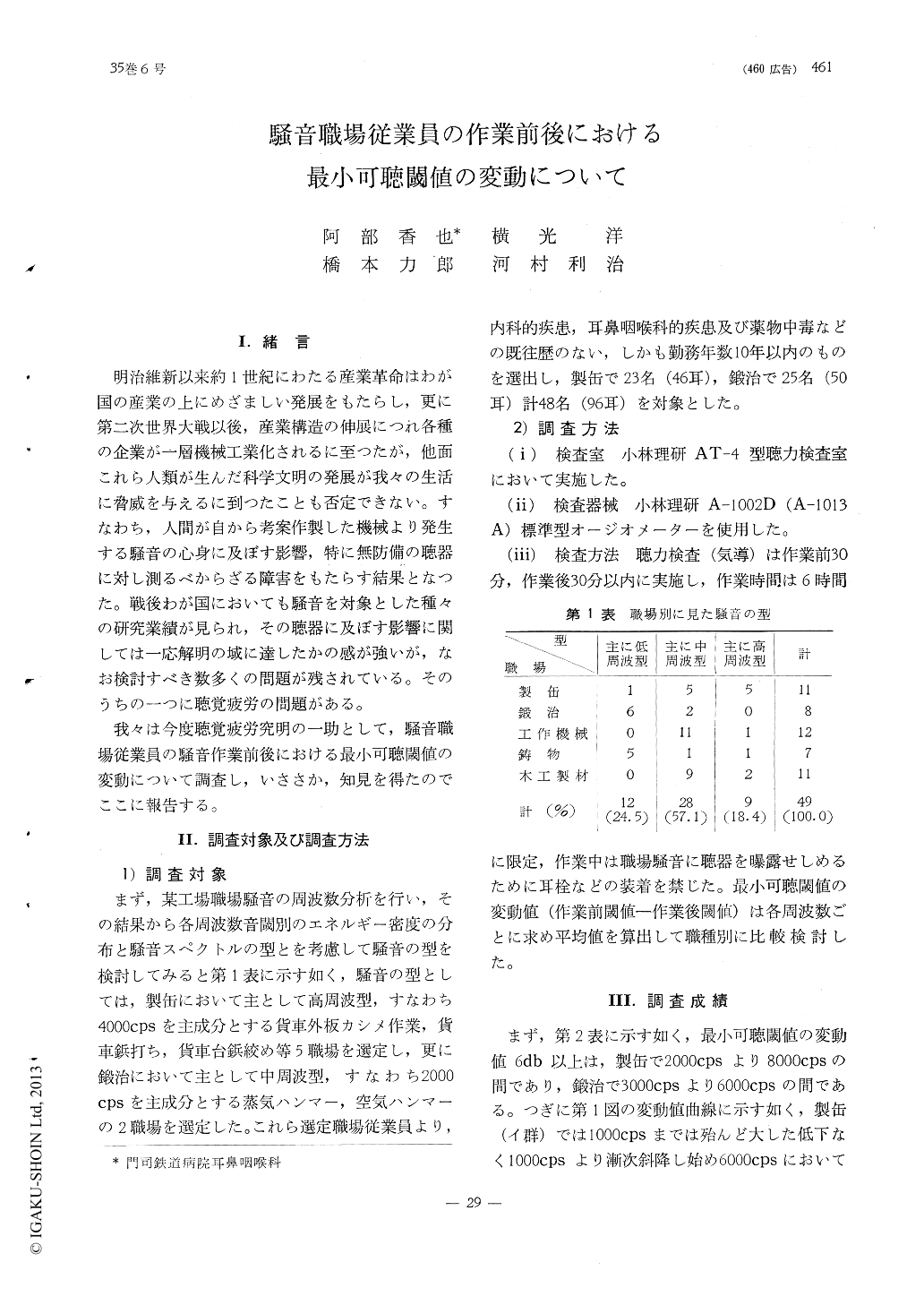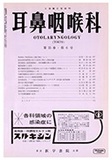- 有料閲覧
- 文献概要
- 1ページ目
Ⅰ.緒言
明治維新以来約1世紀にわたる産業革命はわが国の産業の上にめざましい発展をもたらし,更に第二次世界大戦以後,産業構造の伸展につれ各種の企業が一層機械工業化されるに至つたが,他面これら人類が生んだ科学文明の発展が我々の生活に脅威を与えるに到つたことも否定できない。すなわち,人間が自から考案作製した機械より発生する騒音の心身に及ぼす影響,特に無防備の聴器に対し測るべからざる障害をもたらす結果となつた。戦後わが国においても騒音を対象とした種々の研究業績が見られ,その聴器に及ぼす影響に関しては一応解明の域に達したかの感が強いが,なお検討すべき数多くの問題が残されている。そのうちの一つに聴覚疲労の問題がある。
我々は今度聴覚疲労究明の一助として,騒音職場従業員の騒音作業前後における最小可聴閾値の変動について調査し,いささか,知見を得たのでここに報告する。
Threshold changes that occur among indi-viduals exposed to industrial noises were inve. stigated. The material of study consisted of 48men,96 ears of whorn 23 men and 46 ears were exposed to noises of can-making; 25 men 50 ears to that of black-smith jobs. Th-ese rnen were exposed to noises of their cor-responding jobs constantly for the period of 6hours. Tests were made before and after the work. With the can-makers the dip in the hearing curve centered around 4,000 cps wh-ich was a high frequency typed loss : for the black-smiths the greatest loss centered arou-nd 2,000 cps a medium frequency loss. The hearing loss as tested after the work as co-mpared to that obtained before was about half-octave a rise of 6,000 to 4,000 cps.

Copyright © 1963, Igaku-Shoin Ltd. All rights reserved.


